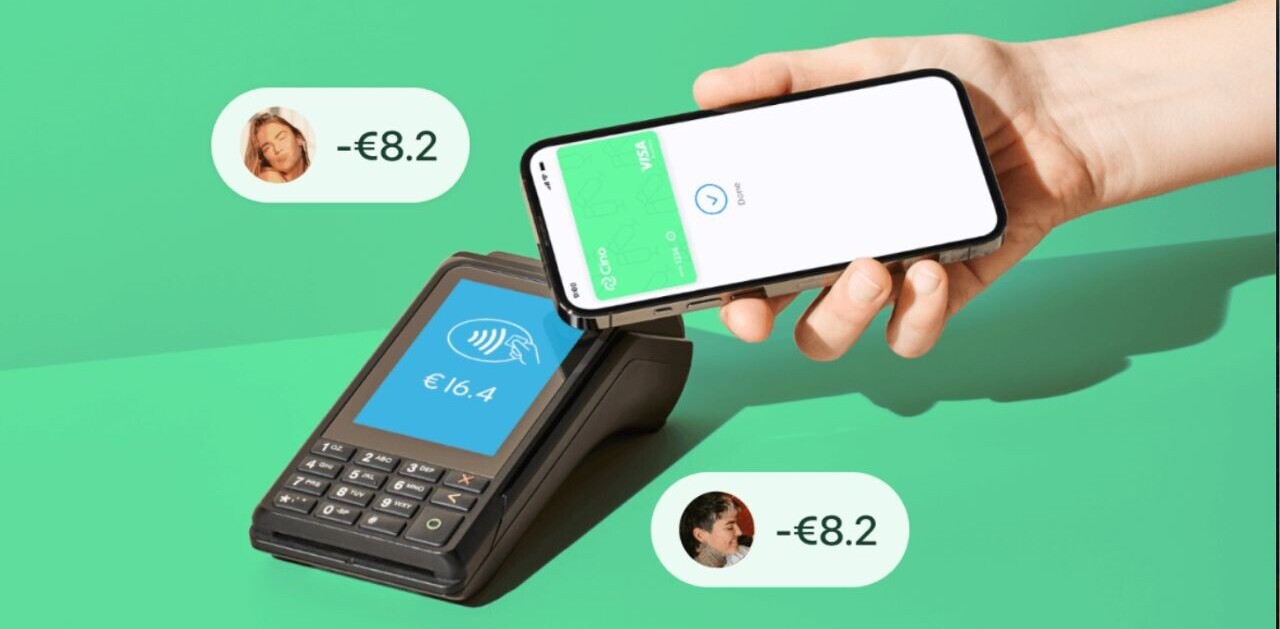Imagine you’re moving to the destination of your dreams. A tropical paradise by the sea? An enchanting mountain village? A sun-kissed chateau surrounded by vineyards? Take your pick. All you need to do is pack a smartphone.
You catch a cab to the station, scan a turnstile, and board a train to the airport. On arrival, you stroll through a biometric corridor and straight on to your plane. After your flight touches down, you collect a rental car. You flash a digital driver’s licence to unlock the door.
You drive to your new home. On the way, you stop off at a store and bag up groceries, household essentials, a crate of beer if you’re so inclined. If you’re in the US, perhaps you also grab a gun. All the purchases are invisibly approved. You walk out of the store and back into the car.
You park outside your beautiful new house. Your face unlocks the front door and you collapse on the couch. With a quick flick through your phone, you open a bank account, schedule bills, and register for services.
Suddenly, panic strikes: you’ve forgotten your wallet. Your cards, passport, health records, legal documents, and education certificates are all missing. But then you remember: everything is safely stored on your phone.
Is it a digital dream or a high-tech nightmare? Either way, it’s edging into reality.
The digital identity
Digital identities are already widespread in financial services, border control, and age verification. Google and Apple wallets are now common tools for payments and data storage.
As the capabilities expand, paper documents and plastic cards will be thrown in the dustbin of history. But the path to adoption is precarious.
Digital wallets still tightly restrain interoperability between apps and services. Use cases are restricted and service availability is limited. The tech has also provoked alarm about mass surveillance and data theft.
To fulfil their potential, digital wallets need guaranteed security, access, and compatibility. In Europe, those guarantees are on their way.
By 2026, the EU will embed them in a new system: the European digital identity (eID).

Baked into an electronic wallet, the eID will store, display, and verify credentials. With just one app, citizens could manage their finances, access services, sign contracts, and travel to that dream destination. All the while, the data will remain under their control.
The plan has won both praise and criticism. Among the supporters is Tim Berners-Lee, the inventor of the world wide web. He believes digital wallets can revive his founding vision: a free and open internet.
The universal wallet
Soon after the web was born in 1989, the tech giants took charge. Berners-Lee watched with gloom as they harvested his brainchild for data. Our information became the fuel of their business empires.
To take the power back, we need to regain control of our data. “Wallets enable that,” Berners-Lee tells TNW. “They let me keep all of my data in one place and choose how, who, and when to share it.”
The 69-year-old has a plan to prove that claim. Through his startup Inrupt, he’s spent the past seven years building tools to decentralise the web. This summer, they reemerged in a new product: a universal data wallet infrastructure.
Built on open standards, the system offers interoperability across multiple services. Information is securely hosted in personal data “pods,” which enable reuse across apps, services, and AI systems. But the user always retains control.
It’s an approach that upends the prevailing model.
The European standard
Today’s digital wallets are siloed “point solutions” with restricted applications. The services they access frequently request data from users. No single wallet can run them all. “It’s as if I needed a different credit card for every store,” says Berners-Lee.
Inrupt’s wallet opens the data silos and connects multiple apps. Berners-Lee describes it as “an extension of the web.”
“Almost anything I can use an app to do today, I’ll be able to do from my data wallet tomorrow,” he says. The eID could bring that tomorrow closer.
Berners-Lee has high hopes for the project. He expects the EU to set an “important bar” for wallets and enforce “a standard” for credentials.
“Once that foundation is commonly available, consumers and citizens will start to expect their wallets to store more and more kinds of data,” he says. “And organisations will think of more and more ways to serve them via their wallets.”

The EU wallet
The eID is also arousing excitement at Mitek, an identity verification firm. The company provides authentication for banking services, biometrics scans at borders, and age-restricted purchases. All these could benefit from the EU’s plans.
Chris Briggs, chief product officer at Mitek, describes the eID as “a true native digital identity.” He expects the project to set “a global standard” for wallets.
Briggs believes the plan hits a regulatory sweet spot: protecting consumers while spurring innovation. That stands in stark contrast to progress across the Atlantic.
In the US, interoperability standards are severely lacking. Accessibility is also inadequate. The result is slower adoption of contactless payments and digital IDs.
“You’ve got to build an ecosystem,” Briggs says. “You’ve got to have standards and interoperability. And the eID does that for Europe.”
The scheme will obligate each EU state to offer a “European Digital Identity Wallet.” Research suggests they will be warmly welcomed.
The surveillance backlash
Across the world, digital wallets are gaining popularity. In 2017, they accounted for an estimated 18% of online transaction value and 10% of consumer spend at point-of-sale. By last year, those numbers had increased to 50% and 30%.
And payments are far from the only attraction. A recent survey found that over half of consumers are also interested in other uses of wallets. Among Gen Z and millennials, the figure rises above 75%.
They may soon get the opportunities they crave. Ben Wood, chief analyst at tech research firm CCS Insight, envisions the functions rapidly expanding. “I expect digital wallets to become increasingly important as more aspects of daily lives are digitised,” he says.
The eID can accelerate this process. But the EU first has to calm the alarms about surveillance.

Critics claim the eID could enable governments to track our every move. Last November, 552 scientists and researchers signed an open letter warning that the plan “substantially increases the potential for harm.”
Wallet firms say the fears are overblown. They argue that the tech will actually improve security and privacy.
Briggs agrees. “Your data is way safer inside a wallet than in your back pocket,” he says. “You’re walking around with a piece of plastic that anybody can copy, photograph, or deepfake. If you have cryptographic controls… it only helps the consumers stay safer.”
The wallet of the future
With strict rules, guaranteed interoperability, and harsh fines for breaches, the eID could strengthen data rights.
Briggs believes an open framework is essential. He also wants the EU to provide robust data protection and consent mechanisms. “A locked down eID would be a detriment to its adoption,” he says. “It has to be built on a published open standard.”
With this framework secured, the eID could push digital wallets deeper into our lives.
Berners-Lee imagines endless possibilities.
One wallet will integrate hundreds of services. Fitness apps, for instance, will fuse with medical records to enhance health analysis. Scientists will tap the insights to create new treatments — but only with your consent. AI agents will then manage the data on your behalf.
There is, however, one problem with the plan: smartphone batteries still suck. One full charge provides around 10 hours of life on average — not ideal when an app manages your life.
Sure, you could carry a power bank or two. But that shatters the dream of moving home with just a phone.
Data firms have already proposed a solution. Instead of opening an app, they suggest accessing the wallet through biometrics.
One day, your face alone could get you to that dream destination. Forget the physical wallet — you won’t even need a phone.
Get the TNW newsletter
Get the most important tech news in your inbox each week.





